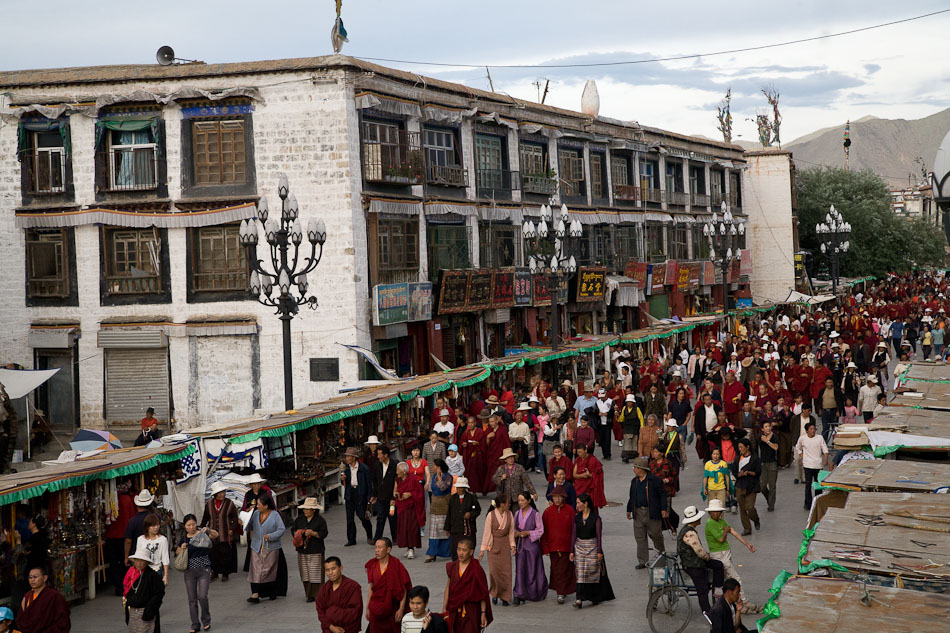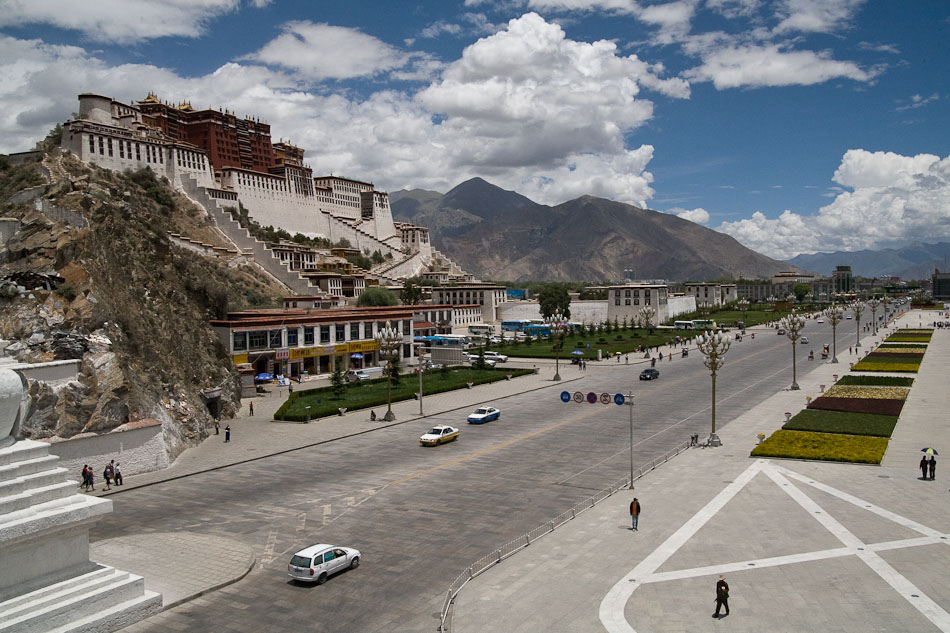As the cultural center and capital of Tibet, Lhasa constantly remains poised to set the socioeconomic tone for the rest of the region. However, after a third visit over six years, characterizing that tone continues to evade me. Lhasa’s elusive nature never seems to resolve itself as the colorful Tibetan quarter continues to hold out against the encroaching conurbations inhabited by immigrating Han Chinese. Two years ago such architecturally uninspiring edifices seemed poised to swallow old Lhasa whole, but now I feel quite the opposite.
The Barkhor pilgrim circuit encompassing the Jokhang temple at the heart of the Tibetan quarter emitted a vivacity I had never felt before. On a daily basis thousands of pilgrims, monks, nuns, and awkward tourists rambled around the residence of the most revered Buddha image in Tibet. An odd cacophony emerged from the crowd as the murmur of prayers mixed with shuffling feet, congenial conversations, and the occasional resounding smack of pilgrims clapping their hands above their heads before prostrating on the ground. More importantly, the alleys surrounding the Barkhor teemed with Tibetans perusing small local markets and bustling about their daily business. I felt I had slipped into a vibrant Tibetan city instead of a fading relic of the past.
Since Tibet’s “peaceful liberation,” the Chinese state has largely committed itself to implementing “progressive” socioeconomic policies in Lhasa in hopes of bringing the rest of the region under more centralized control. Many indigenous customs were condemned while major religious institutions endured heavy censure and sometimes destruction in an attempt to redefine their identities and role in communities. For example, since the fourteenth Dali Lama’s 1959 exile into India, the Potala Palace was transformed into a state museum used to portray his presence as a figment of the past overcome by the ineluctable advent of modernity. Monks that attended the shrines were not even allowed to wear traditional monastic robes – the Chinese state did not want any indication that it still remained a functioning religious institution. Within the scope of socioeconomic progress, the Chinese state attempted to consign the Potala Palace to a bygone epoch just like the Forbidden City in Beijing. Still, its potency and ability to inspire awe remained, just as an undeniable resilience still prevailed within the Tibetan quarter.
Lhasa embodies an odd paradox posed by free market reforms and the rise of consumer culture introduced by the Chinese state. Newly built strip malls now crowd important temples and monasteries – centers of a faith devoted to self-abnegation and rarified spiritual pursuits. Nonetheless, a monk pulling a slick cell phone from beneath his robe no longer seems so strange a sight. Many religious institutions subsist on a very ambiguous line as mere tourist attractions and functioning monastic and spiritual centers. In all, generalizations continue to fail to capture this marvelous city as it persistently twists into a stranger synthesis of global influences and longstanding traditions.

